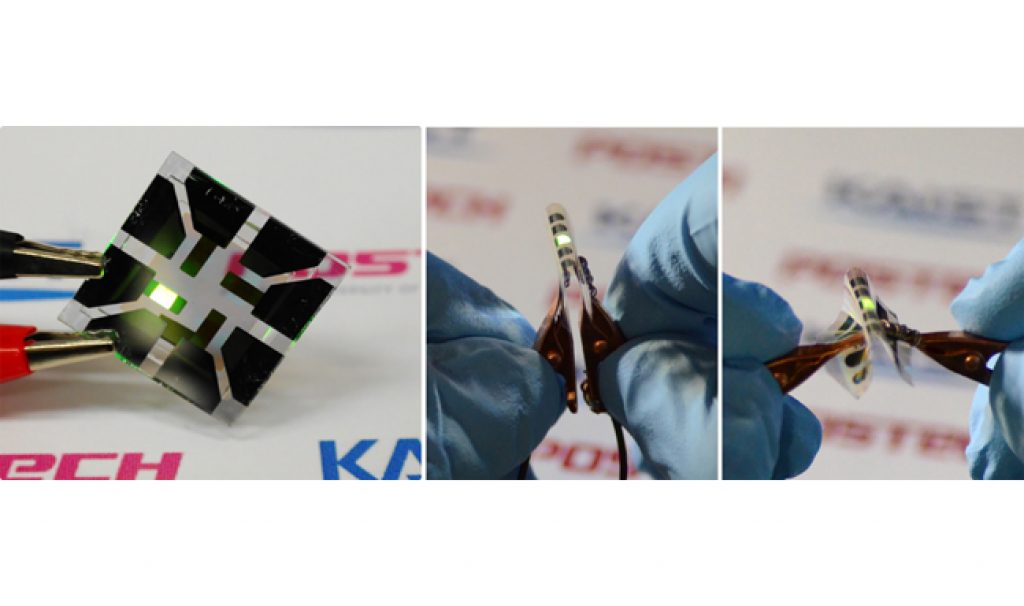
AsianScientist (Jun. 15, 2016) – Thin and lightweight computers that roll up like a piece of paper might be in the not-too-distant future.
Led by Professor Yoo Seunghyup from the Korea Advanced Institute of Science and Technology (KAIST) and Professor Tae-Woo Lee from the Pohang University of Science and Technology, the research team developed flexible organic light-emitting diodes (OLEDs) using graphene as a transparent electrode, placed in between titanium dioxide (TiO2) and conducting polymer layers. The research results were published in Nature Communications.
Graphene, a two-dimensional thin layer of carbon atoms, has recently emerged as an alternative to the industry standard—brittle, expensive indium-tin-oxide (ITO). However, the efficiency of graphene-based OLEDs reported to date has been, at best, about the same level of ITO-based OLEDs.
As a solution, the Korean research team proposed a new device architecture to maximize the efficiency of graphene-based OLEDs. Simply put, they developed a transparent electrode with layers of differing refractive indexes—a measure of how light propagates through a medium.
With this approach, graphene-based OLEDs exhibited 40.8 percent of ultrahigh external quantum efficiency and 160.3 lm/W of power efficiency, unprecedented in those using graphene as a transparent electrode. Furthermore, these devices remain intact and operate well even after 1,000 bending cycles.
This is a notable development for OLEDs containing oxide layers such as TiO2 because oxides are typically brittle and prone to bending-induced cracks, even at a relatively low strain. The research team discovered that TiO2 has a crack-deflection toughening mechanism that prevents bending-induced cracks.
Possible applications of this technology include highly flexible and wearable displays, or flexible sensors that can be attached to the human body for health monitoring.
The article can be found at: Lee et al. (2016) Synergetic Electrode Architecture for Efficient Graphene-based Flexible Organic Light-emitting Diodes.
———
Source: KAIST.
Disclaimer: This article does not necessarily reflect the views of AsianScientist or its staff.












